
hy is proper Western saddle fit important? Before I answer the question, let me give you an everyday scenario many folks can identify with. For most people, going shopping at the mall is usually a good experience.
But if you’ve ever tried to go shopping at the mall in shoes that were too tight, you know just how awful and painful an otherwise good experience can be.
Yet, quite often we expect our horses to perform and obey our commands while wearing ill-fitted saddles, simply because of our inability to recognize proper western saddle fit, or we simply don’t know how to rectify the problem.
In this post, I’ll help you discover the 6 major signs your saddle doesn’t fit your horse, and how you can fix the problem so that your horse is free of pain and happily responds to your commands.
Why Saddle Fit Matters

Whether horses are your livelihood, or you simply enjoy the equestrian sport, horse care is costly. When your horse doesn’t perform well and fails to live up to your expectations, your disappointment is understandable.
But quite often, your horse’s poor performance is due to pain and discomfort because of a poorly-fitted saddle. So, you waste unproductive hours, months, and even years, trying to train your horse, who’s limited by back pain.
Horse owners are simply amazed at the dramatic changes in their horse’s performance and response once they’re wearing a properly fitted saddle. So, how can you tell when saddle fit is correct?
When Western Saddle Fit is Correct
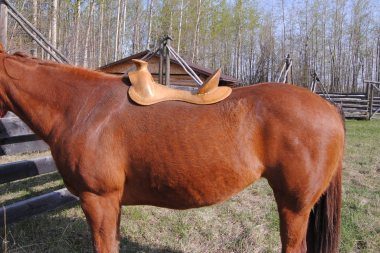
You know you have the proper saddle fit when:
- Your horse is relaxed and willing to obey commands easily
- You spend far more pleasurable hours in your saddle – as opposed to fighting with your horse to comply with your commands
- Your saddle feels comfortable and fits like a worn glove
- You’re able to sit in the seat comfortably without struggling to find a spot that allows you to relax and keep your balance
- Your horse moves freely and with an easy stride
Okay. Now that you know when you have the proper saddle fit, how do you know when you have an ill-fitted saddle?
When Saddle Fit is Poor
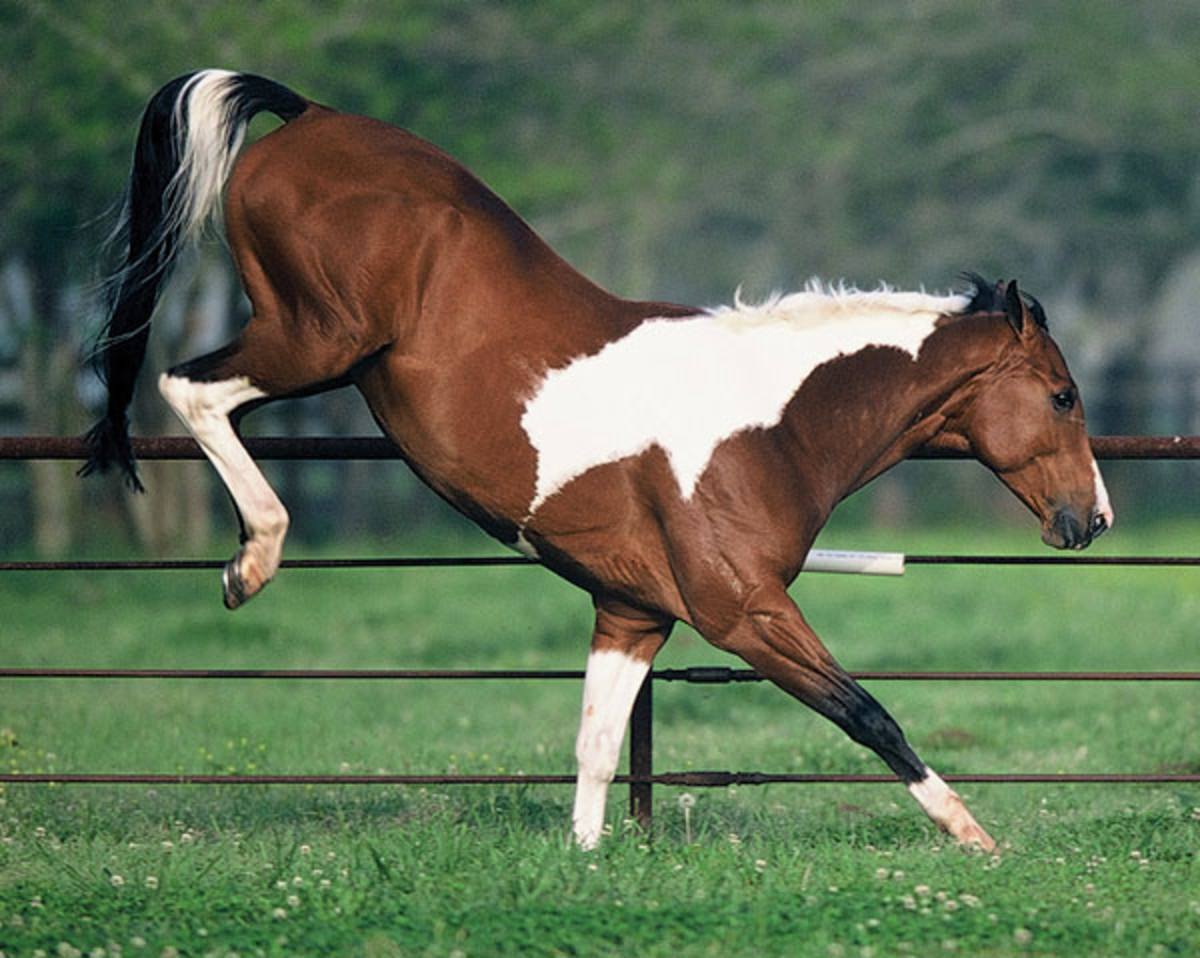
You know you have a saddle that doesn’t fit your horse properly when:
- You have to fight to keep your balance in the seat
- Your body is in pain because the saddle puts you in the wrong position
- Your horse doesn’t respond to your commands because he’s in pain
- Your horse bucks when you try to saddle him
- Your horse hits the ground harder with his feet, which increase stress and soreness on his lower legs
Maybe you’re thinking, “But what if some of the horse’s behaviors and symptoms you mentioned are par for the course? Doesn’t everyone get sore when riding their horse at some point?”
The simple answer is, yes. But since you’re still not convinced that your saddle is the problem, here are more obvious signs your horse saddle is definitely the problem.
6 Physical Symptoms of An Ill-Fitted Saddle
Here are 6 direct and obvious signs and symptoms your horse saddle is definitely the problem:
- Sores
- White Hairs
- Temporary Swelling after Saddle Removal
- Scars or Hard Spots in Muscle or Skin
- Muscle Atrophy on Sides of Withers
- Friction Rubs in the Horse’s Hair
Sign #1 – Sores
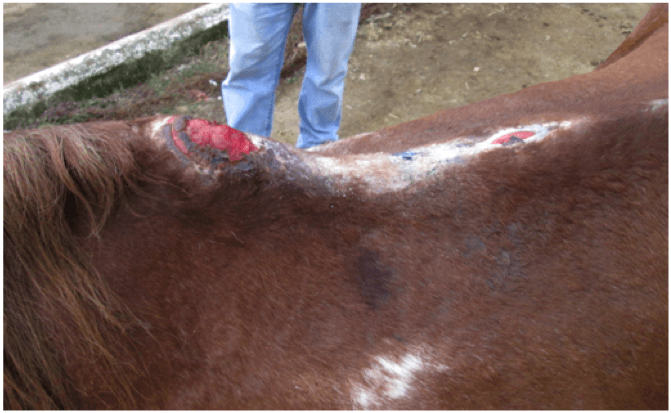
Because trail, endurance and ranch horses are ridden for extended periods of time, these particular type horses endure frequent sores when an ill-fitted saddle is worn.
So, what should you do if you find a sore?
Every time you take your saddle off your horse, you should inspect your horse’s back. If see a sore on your horse’s back, check the bottom of your saddle.
Sores occur from broken trees or nails that have come loose and are digging into your horse’s back.
Sign #2 – White Hairs

Too much, or inappropriate pressure from a saddle, produces white hair. This is because the pressure from the saddle alters the hair follicle. Because sometimes the hair change is subtle, you may not notice it until the Spring or Fall, when coat change occurs.
If you correct the problem by buying the correct saddle, the white hairs might disappear at the next coat change. But if the white hairs re-appear, it means you still have an ill-fitting saddle.
Unfortunately, there are some horses with permanent white hair in the saddle area. This means that the problem was never corrected, and the horse has residual back pain, which originated from poor saddle fitting.
Sign #3 – Temporary Swellings
Sometimes temporary swellings are referred to as “heat bumps”. Heat bumps are commonly found on endurance horses due to the rigorous long-distance an long hours of riding.
Heat bumps occur due to the pressure of the saddle or the rider.
Sign #4 – Scars and Hard Spots (Lumps and Bumps)
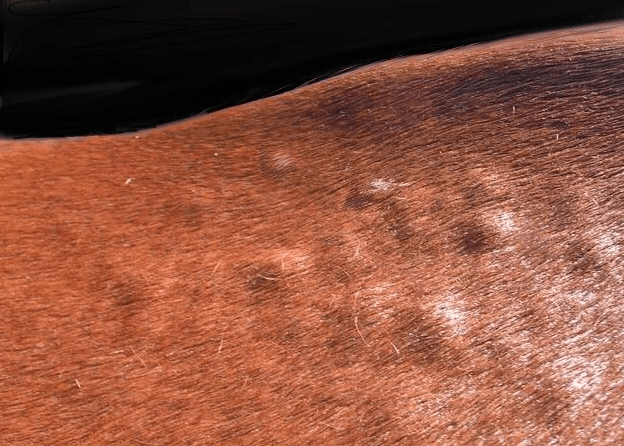
Lumps and bumps, also known as scars and hard spots, occur on either side of the withers. The pressure and friction from an ill-fitting saddle causes tissue layers deep beneath your horse’s skin to become damage.
The dead and/or damaged tissue create pressure bumps.
The scars can be on the surface, or deep within the muscle. Trail horses often suffer from skin surface scars. But scars can occur on any breed wearing the wrong saddle.
Sign #5 – Muscle Atrophy

Muscle atrophy is when there are deep pockets (dents or depressions) on either side of the withers. Poor muscling over the entire back is another sign of muscle atrophy.
What causes muscle atrophy?
Saddles that are too narrow or unnecessarily thick saddle pads that compress the withers cause muscle atrophy. Proper Western saddle fit will reverse this condition, and the hollow areas will fill out.
Sign #6 – Friction Rubs
When a saddle constantly moves from side to side, it’s due to incorrect cinch placement, saddle width (it’s too wide), or uneven bars. The result is friction rub on the horse’s hair.
If you’re observant (which you should always be when it comes to your horse’s comfort), you’ll notice the friction rub as soon as you take the saddle off. Friction rubs can be sore, but not always.
Now that you know what physical signs to look for on your horse’s body when it’s fitted with the wrong saddle, let’s take a look at some of the behaviors displayed by your horse that indicate its back is killing him.
3 Behavioral Signs of Horse Back Pain
Here are 3 signs your horse’s behavioral problems are due to back pain:
- Objects to being saddled
- Doesn’t stand still when you try to mount
- Hypersensitivity to brushing
Sign #1 – Your Horse Objects to Being Saddled
Think about it. If your back was killing you, would you want someone mounting on it? No. Your horse is no different. A lot of performance horses have back pain, but many have back pain due to ill-fitting saddles.
Once you have the correct saddle, the resistance stops.
Sign #2 – Your Horse Won’t Stand Still When Mounting
If your horse constantly fidgets, even when tied, it’s likely because every time you try to mount him, the saddle jams him at the base or sides of his withers.
High-withered horses usually suffer from this kind of unconscionable pain.
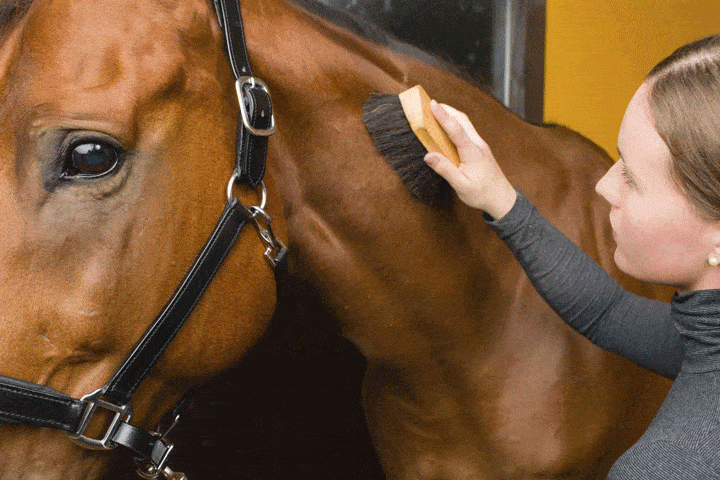
Sign #3 – Your Horse is Sensitive to Brushing
When a horse’s back is sore, the last thing he wants you to do is to brush his back – or any other part of his body. It’s simply too painful.
Get The Proper Western Saddle Fit – Problem Solved
In conclusion, no matter what type of Western riding discipline you’re engaged in, proper Western saddle fit is crucial to your horse’s comfort and ability to respond to your commands.
Proper saddle fit will also decrease your own physical pain and soreness as well as your frustration with your equestrian friend.
And now that you know the signs that your saddle doesn’t fit your horse, what are you going to do about it? Click here to get help proper Western saddle fit and all of your saddle needs.

I knew of the physical symptoms of improper saddle fitting, but I didn’t even think about the behavioral aspects. I always felt that if a horse backs away when trying to mount or saddle up, it was due to their wanting to be free. I learn something new everyday!
Hi Andrew. You’re right! The horse does want to be free, and that’s why they’re moving away when they don’t want to be saddled up. Unfortunately, riders don’t take the time to figure out WHY the horse is moving away. They just assume the horse has a “bad attitude.”
Wow! I learned something new today. I hadn’t realised how important saddle fit was. I always assumed it was a bit like a baby car seat – one goes easily between cars. However, it makes sense that that isn’t the case with a saddle. How do you get around the issue of riding different horses? Do you have a saddle specific for each horse?
Hi Megan. No two saddles are the same. The type of material used, the type of tree used, the bar size, play a factor in how a saddle fits. When you first go horse riding, you haven’t yet developed a specific riding discipline. So you would probably be using a trail/pleasure saddle. But once you’ve decided on a particular riding discipline, you’re going to buy a saddle for that style of riding.
How do you get around the issue of riding different horses? Well, when you buy a saddle, you know what discipline you’re buying it for. Just as there are different riding disciplines and saddle types, there are certain horses designated for that sport.
For instance, if you’ve decided to buy a roping saddle, it’s because you’re going be engaged in that sport for a long time. The American Full Quarter Horse is just one horse of a few that are used in this riding discipline. So you know you’re going to buy a saddle with features that fit that type (or similar) horse.
I hope this was helpful. If not, let me know.
@Gabbs: Yes. Saddle fit is the most important aspect of horse riding. So few people understand this and tend to go by how a saddle looks when purchasing one. Thank you for stopping by.
Wow, I was not aware how painful a poor saddle fit could be for the horse. Thanks for the excellent info as usual 🙂
Hi Emonne! Thanks for stopping by and commenting. Yes, I agree with you. But most people don’t know how to fit a saddle to a horse, or even know the link between poor saddle and horse back pain.
@Robert M. Doyle: Thanks for stopping by. I’m glad you found my post helpful. So many horse riders don’t understand the importance of proper saddle fit.
I’ve only ever ridden a horse at a petting zoo, these pictures made me think about all those horses at the petting zoo whose backs might have been in pain. Especially, after riding all those kids.
Your article makes total sense, if you can’t make sure that your horse is fitted right, then maybe you don’t need to ride him. It’s just that simple.
Thanks for sharing this, it was a definite eye-opener.
Appreciate this post very much. I have ridden horses of the years regularly, but I am not the owner. This is very pertinent information for horse ownership. Glad to see a simple easy-to-understand post about saddles, their proper fittings, and tell-tale signs. My sister recently joined a nonprofit organisation using horses to help with special needs. I will share this with her. Thanks for sharing this.
Hi Jenny. I’m so glad you found the article useful. As a beginner, it’s really important to learn about saddle fit and the different parts of the horse saddle’s functionality. Happy trails.
Hi Curtis. I’m so glad you, as a horse rider, understand the importance of saddle fit!
I didn’t even know there sizes! And I want to learn riding next year. I think I need to learn some theory as well! Poor horses… I felt sorry just by looking at the photos.
Thanks for the article. Really useful, especially to beginners like me!
Have a great day!
Another great article on horse saddles. I hate when people don’t make sure the saddle is not hurting their horse. A good cowboy would never let his horse be in pain. Saddle fit is clearly critical to your horses wellbeing. If he is happy, you will be as well and your ride will be amazing. I used to rope and heard cattle at home so I completely understand how the saddle needs to work. People, spend the money to make your horse comfortable. Remember, you get what you pay for.
Thank you Shalisha this article.
Hi Igor. Thanks for stopping by and reading my post. I agree with you. Many people don’t know the importance of saddle fit. So they buy a saddle with the wrong features and end up hurting themselves and the horse.
Glad you liked my article.!
Hi Shalisha!
First of all congrats on the topic. Horses are wonderful animals and I like them very much.
Unfortunately, I don’t own a horse and don’t know about horses too much, especially about horse saddles, so such info is very helpful for the people like me or even more for the people who are starting with riding or buying a horse.
As shown in your post, there are many things to think of when chosing the right saddle for the horse.
You made it much easier to understand that issue.
Thanks for sharing!
Well done!
Best regards!